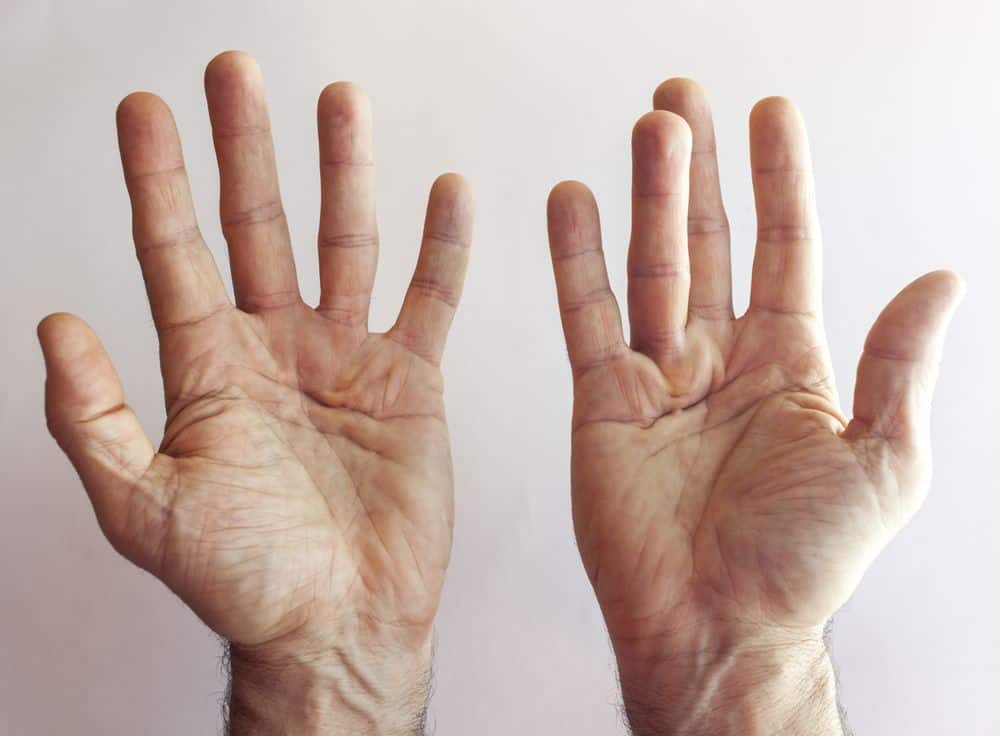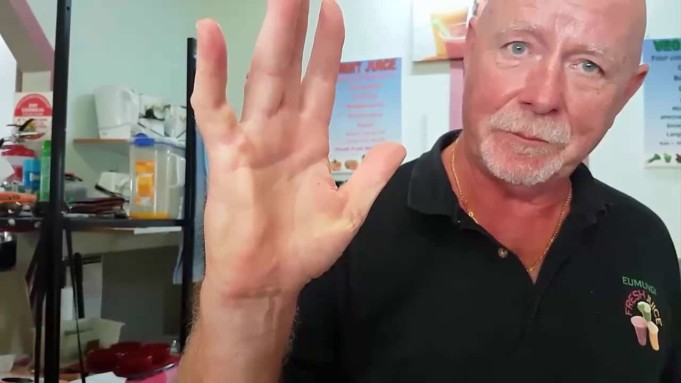During my secondary school days, I had a teacher who was left-handed; we noticed two fingers of his right hand were stiffed and bent pointing to different positions, like someone having an epileptic panic attack.
No one dared ask our teacher what was wrong with his fingers because it will be rude to do so. This condition is commonly called the “Vikings disease”.
Viking disease was first described by a medical doctor; Dr. Dorland, as shortening, thickening and fibrosis of the palmar fascia (band of tissue under the skin of the palm) resulting in a flexion deformity of a finger.
Vikings disease is a medical condition whereby the phalanges (fingers) become permanently and oddly flexed or bent. It usually begins as small, hard nodules just under the skin of the palm but over time; it worsens until the fingers can no longer be properly straightened.
History of Vikings disease
Viking disease has been around for a very long time in Europe, having many stories attached to its history and origin. One of the many interesting stories dates back to the sixteenth century in Old Scotland; Island of Skye, when pipers known as the MacCrimmons were cursed by a widow whose only son was taken by the press gangs. Others tell of a MacCrimmon woman, named, Annag who was punished for giving piping secrets to her Lover; by removal of several fingers…
Whoever saw the appearance of the curse (Vikings disease symptoms) agreed that the angry maiden foretold that the MacCrimmons would cease to be the official pipers to the MacLeods of Dunvegan (leading chieftains at the time) and will be made to leave the Isleas of sky forever.
And so, it came to pass, the fingers of the ManCrimmon men bent so far into their palms that they were unable to continue as pipers. And from that day on, any piper who suffers from Viking disease will tell that he has been affected by the Curse of the MacCrimmons. his story served as one of the many ways in which experts were able to track the Vikings diease back through history.
Why is it called Vikings disease? Some may ask. Well, the answer is traditionally, another of the many old stories about the Vikings disease and its name says it originated with the Vikings, who spread it throughout Northern part of Europe as they travelled and interrelated with other colonies.
After being present for centuries, DD started going by many other names; among others include, Morbus Dupuytren, Dupuytren’s contracture, MacCrimmons’ Curse, Vikings contracture and Dupuytren disease, but retained the Viking story name.
Anatomical Evaluation of Vikings Disease
The internal structures of the palm of the hand consist of many nerves, tendons, ligaments, muscles and bones. The complex working combinations of these allow us to move, flex and extends of hands as anyhow we are allowed to.
The bones give our hand structure and form joints, these bones are held together by ligaments, muscles allow the joints to bend and straighten and tendons joins the muscles to the ligaments.
While nerve stimulates the muscles, blood vessels supply needed nutrients and oxygen to fuel the muscles, enabling them to work properly and effectively heal when injured.
When these internal structures and connectors, forming the hand shrinks or shortens due to a known or unknown factor, it causes the affected finger(s) to bend fixedly bent.
Though Viking disease is not painful, the main concern is as it evolves the affected fingers cannot be used properly and this hinders routine use of the hand or hands as it can affect both hands and even the soles of the feet.
Causes of Vikings Disease

A primary cause to anchor the Viking disease onto is still unknown. In recent times, medical researchers have been able to link to the Viking disease among patients with diabetes.
Though it has not been determined whether work task can put a person at risk or speed the progression of the disease but people who smoke have a greater risk of having Vikings disease and heavy smokers who abuse alcohol are even more at risk. Some other risk factors include; family history, thyroid problems, liver disease, epilepsy and chronic alcoholism.
On the Other hand, several other medical conditions have been associated with the Vikings disease; some are tenuous relationships while others are more marked.
Medical conditions including:
- Arthritis
- Myocardial disease
- Reflex sympathetic dystrophy
- Barbiturate ingestion
- Fibromatosis
- Peptic ulcer
- Fibromatosis
- Knuckle pads
- Trigger fingers
- Plantar nodules
- HIV
- Trauma and occupational stresses
Symptoms of Vikings Disease
- One of the first symptoms to look out for is the appearance of a hard painless lump on the palm, usually close to the ring or little finger.
- It begins with pitting and thickening of the palmar skin and underlying subcutaneous tissue.
- Loss of mobility of the overlying skin
- It is common to both hands (40%) but can affect only one hand.
- The nodule formed is firm and painless and fixed to the skin and deeper fascia. The nodule is palpable and later becomes visible.
- A linear thickening that resembles a tendon, medically called a cord, develops and begins to contract over time.
- The contraction/shortening of the cord pulls on the metacarpophalangeal (MCP) joint and proximal interphalangeal (PIP) joint and causes a progressive flexion deformity in the fingers.
Diagnosis of Vikings Disease
Just like self examination for breast cancer, an individual can self check him/herself for any symptoms of the Vikings disease.
At any centre for Musculoskeletal Medicine, you will be asked for examination of the palm of your hands and your fingers. Abnormal fascias will feel thick. Cords and small nodules in the fascia may be felt as small knots under the skin.
These nodes usually form first in the palm. As the disorder progresses, nodules form along the finger.
Vikings Disease Treatment
Many approaches have been made to help combat this medical condition. Mild cases are generally monitored until the condition progresses to a point where intervention is needed.
- One of these interventions is collagenase injections into the tissues affected by Vikings disease. This assists in breaking up the bands of thickened tissues, which can then be stretched thereby releasing the contracture.
- Another medical procedure involves the use of a sterile medical needle to cut and release the bands. This process is called needle fasciotomy.
- Surgeries called Vikings fasciotomy can also be used to treat the condition, the surgery involves making incisions in the hand to divide and remove the thickened tissue in the palms or n=soles, allowing them to be straightened. This is done under local or general anaesthetic.
For the above process, it is recommended to see a hand therapist as soon as possible to help reduce swelling and work on regaining movement.
Other treatments to help with pliability and release, healing the palmer fascia (internal structures of the palm) are:
- Special stretches of the palmar fascia
- Articulation of the hand to mobilize stiff joints
- Shock wave therapy of the palmar fascia
Conclusion
Deformity caused by the Vikings disease can affect activities of daily living and occupation. The stage at which the patient presents will depend upon tolerance of this and is likely to depend upon the degree of which work, or hobbies may be affected.
References;
- The Vikings and Baron Dupuytren’s disease; http://www.ncbi.nlm.nih.gov/pmc/articles/PMC1305903/
- Vikings disease; https://www.topdoctors.co.uk/medical-articles/dupuytren-s-contracture-the-viking-disease-explained
- Treatments of Vikings disease; https://www.gu.se/en/news/needle-release-optimal-treatment-for-viking-disease












